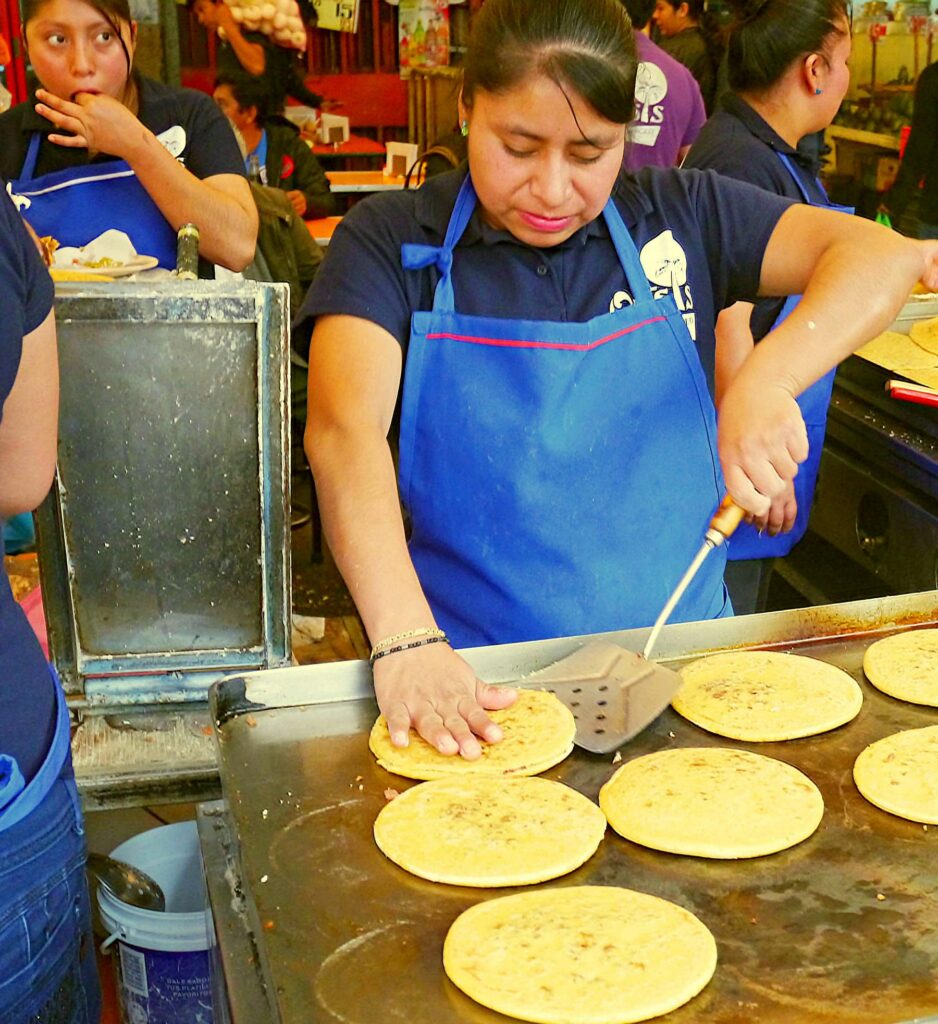
Enjoying the sheer immersion of a Mexican food market
Diego Rivera (see last post) wasn't the only one obsessed with Mexican food markets. It's funny that Americans think of Mexico as a place where all the meals are based on dried corn made into a bread (tortillas), dried chiles made into sauces, or dried beans made into burrito fillings. Given their druthers, most Mexicans eat fresh fruits and vegetables as their dietary mainstays. True, they do love to grill and deep-fry some foods, but the key to the Mexican table is fresh food. That could include some pretty exotic stuff. The basket of small gray stuff in the left pane above is huitlacoche—fresh corn infected with what American farmers call ‶corn smut.″ It's a fungus that makes the kernels ooze with an inky, musky...Read More
